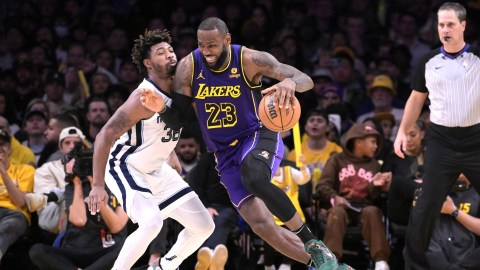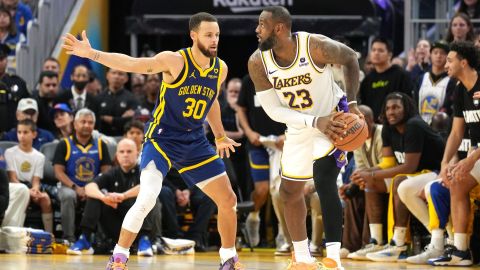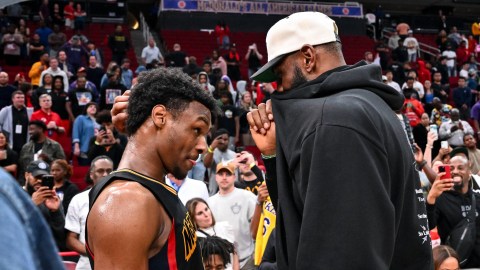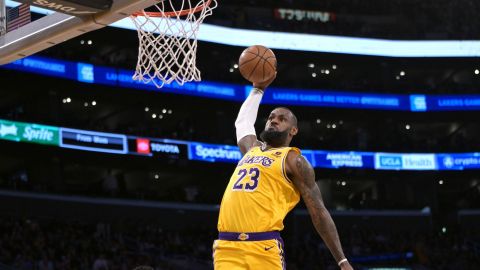 Dwight Howard wheeled toward the official, incredulous that the whistle had not been blown. The Lakers center felt he was fouled and took his issue directly to the man in stripes — even as the other nine players took off for the opposite end of the court and Enes Kanter, the man Howard was supposed to be guarding, slammed home a dunk.
Dwight Howard wheeled toward the official, incredulous that the whistle had not been blown. The Lakers center felt he was fouled and took his issue directly to the man in stripes — even as the other nine players took off for the opposite end of the court and Enes Kanter, the man Howard was supposed to be guarding, slammed home a dunk.
That moment in Los Angeles’ loss to the Utah Jazz on Wednesday summed up many things about the Lakers’ 1-4 start to the season, from their basic ineffectiveness both offensively and defensively to the growing frustration among the players and fans. The worse things go, the more they complain. The more they complain, the worse things go. It is a spiral some observers wonder will ever end.
Howard apparently did not see the irony in his plea for a foul, either. Even if a foul had been called, the benefit he and the Lakers would have gained probably would have been minimal, because Howard’s free throw shooting, never one of his strengths to begin with, has deteriorated to a point where it has turned costly for his team.
Through five regular-season games, Howard was 32-for-64 from the free throw line for an even 50 percent. He was dragging down the Lakers’ team free throw percentage to .663, third-worst in the NBA, despite deadeye accuracy by Kobe Bryant, who along with Howard takes the bulk of L.A.’s foul shots. The Lakers were a middling 16th in free throw percentage last season but they got to the line so often (more than all but eight teams in the league) that their modest percentage was not a glaring weakness. This season, despite leading the league in free throw attempts by a wide margin, they lead the league in free throws made per game by only one-tenth of an attempt over the second-place Chicago Bulls.
This could turn out to be a critical deficiency for the Lakers even if they correct their myriad other issues. The Lakers weigh their success on how they fare in May and June, as you might have heard, and lots of those games come down to the few points scored at the charity stripe. One overlooked potential benefit of Howard’s arrival in L.A. was that the Lakers would live in the foul bonus, since nobody draws fouls as efficiently as the 6-foot-11, 240-pound behemoth from Atlanta. Conceivably, that should help Bryant, as well, since more of the fouls Bryant draws would therefore send him to the line. But Bryant actually was attempting fewer free throws per game and per 36 minutes than he did last season, meaning most of those extra free throws are not going to good shooters but to a player who is thrilled if he can even hit one out of two.
Howard was once a reasonably solid free throw shooter. He shot 67 percent from the line as a rookie but fell below 60 percent in his second year and hit a career-low 49 percent last season. Once he developed a reputation as a below-average foul shooter, he never rediscovered his stroke. This affliction has struck many young big men whose foul shooting went from mediocre to bad and never recovered, like some sort of mental block they could not shake.
Shaquille O’Neal, an infamously terrible free throw shooter, shot 59 percent as a rookie but matched that number only twice over the course of his 19-year career. A current example is JaVale McGee, who hit 66 percent of his foul shots as a rookie but whose percentage has declined in the three years since. It is rare for an athletic, muscle-bound post player to improve in the opposite direction like Karl Malone, who transformed from an awful 48-percent foul shooter into an effective one who lapped at 80 percent several times in his career.
But wait — didn’t the Lakers manage to win three championships with O’Neal laying bricks from the line? Couldn’t they do the same with Howard, who is further along in his development than O’Neal was when he joined the Lakers in 1996 at the tender age of 24?
Winning with Howard testing the fortitude of the rim is not impossible. He led the Magic to the 2009 NBA Finals while shooting 59 percent from the stripe, after all, but there were significant differences between that Magic team — not to mention O’Neal’s Lakers squads — and these Lakers.
The 2009 Magic and the 2000-2002 Lakers had better coaches than Mike Brown, for starters. (That does not mean Brown is a bad coach, but merely that Stan Van Gundy and Phil Jackson are better, and very few experts would dispute this.) They also did not have an impatient Bryant getting testier with every botched play — and if Bryant got snippy with Jackson, the coach had an authority over his 21-year-old shooting guard that Brown does not enjoy over the 34-year-old, five-time NBA champion version. In the Magic’s case, the Eastern Conference was weakened in 2009 due to Kevin Garnett‘s knee injury, which handicapped arguably the league’s best team earlier in the regular season. Most of all, though, O’Neal was just plain better than Howard, so comparing their postseason success relative to their free throw percentages is sort of like comparing a Bentley to a BMW based on them having the same number of cup holders.
Howard’s free throw shooting will not be the only thing that keeps the Lakers from winning the 2013 title — if anything does at all — but among their multitude of problems, it only makes a potential turnaround more difficult. Most damningly, the statistics show that this particular problem is only getting worse, not better.
Have a question for Ben Watanabe? Send it to him via Twitter at @BenjeeBallgame or send it here.



